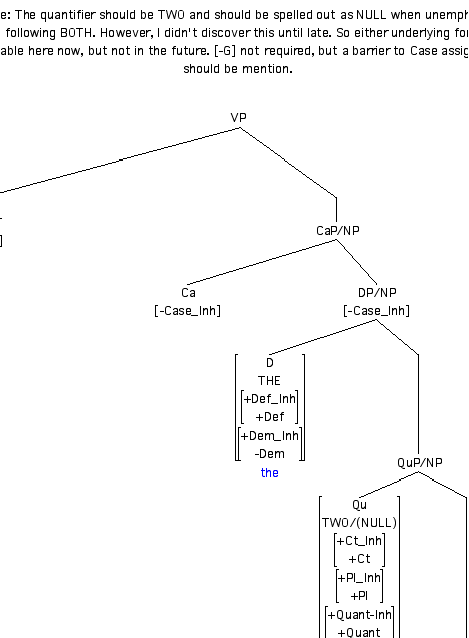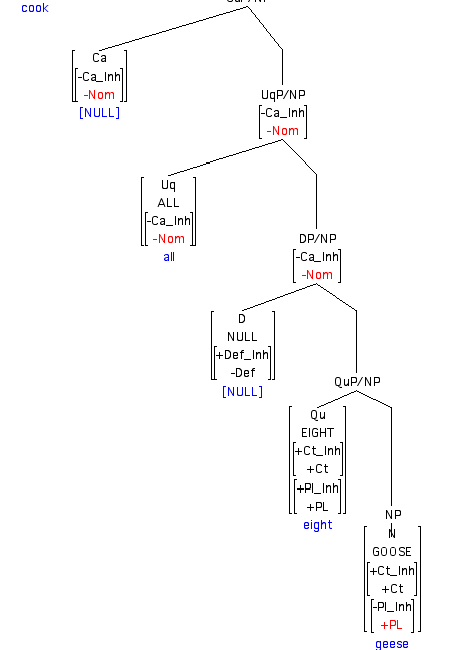Summer 2001
- Define the Case Filter. It is possible to use the Case features ([±Case_Inh] and [±Nom]) to represent the Case Filter. How can you do this? (10)
*NP if NP is phonetic and NP has no Case.
Yes; If NP is marked as [-Case_Inh], then the absolute value of Case must be determined. If it is not determined, the form will crash (be rendered ungrammatical).
- What principle(s) or rules do the following sentences violate? Explain with the correct form of the sentence (a derivation is not required here): (20)
John painted all those three houses.
See *john painted both those three house.a) Both is [+Daul] and three ios -Dual]; they do not agree.
house is [-Pl] and three is [+Pl]; they do not agree.
See *john painted both those three house.b) Much is [-Ct], students is [+Ct]; they do not agree.
the is [+Def], some is [-Def]; they do not agree.
(1c) Saw is marked [-Nom], him is marked [+Nom; they do not agree.
- Determine a partial logical (argument) structure for the following sentence (full NP, and the main verb), derive its surface structure (short of accounting for the operators of the verb). Long version of features and links must be included (35). No need to explain each step here; see IV. Note that the feature [-Nom] is blocked here. We will cover this later:
- Both the deer were shot. (....shoot both the deer).

